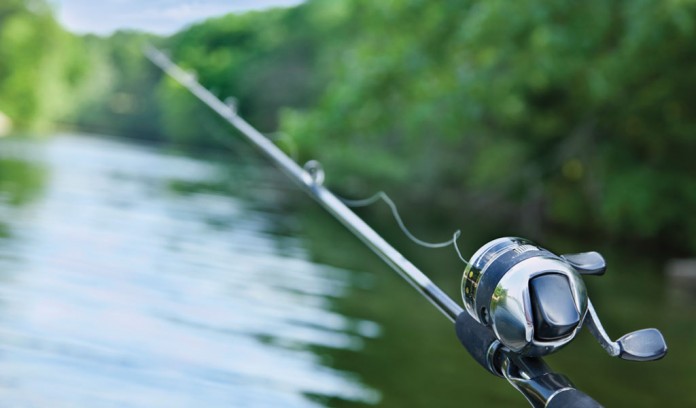Have you thought about a fishing trip to Canada this summer? If not, you ought to.
A day’s drive will get you to a string of warm days full of adventure and the same number of cool, quiet evenings complete with the smell of a dry pine campfire glowing red and crackling like only a Canadian fire can.
On a clear night in Ontario’s near north northern, the sky seems so full of stars that there’s hardly room for the blanket of deep black that holds them.
And while trying hard to pick out the common constellations a skillet filled with sizzling walleye fillets awaits the second batch that will soon follow the first. Oh man, this is about as good as it gets. And yes, it’s all well worth the price of admission.
Yes, a trip to Canada costs money, gasoline is more expensive than here, and yada, yada, yada. But really, a gallon is bigger there and a mile is a kilo — or is it?
Once there and once enjoyed, you’ll go back. That’s a promise.
Since you cross an international border to get to your fishing vacation in Ontario, you’ll be in a foreign country. That means inches, pennies, quarts, dollar bills and pounds are out and metrics are in. So get over it before you leave.
Metric
Here are the real metric driven facts: Thanks to an increasingly stronger American currency of recent, one U.S. dollar is worth $1.30 or so in Canadian currency — it changes daily but that figure is a good baseline for budgeting.
That’s a real and pleasant change from recent years when the U.S. dollar was worth less than a Canadian dollar.
Many travelers are already buying Canadian money in preparation of summer trips. And why not considering that $1,000 U.S. buys $1,350 worth of Canadian goods, services, and gas.
Some U.S. banks deal in currency exchange and some don’t. To be sure, don’t expect to count out a stack of American money at the gas pump unless you like to lose.
Vendors tend to like calling it even, or very near even, so they can cash in any U.S. currency they pull in for the positive exchange rates.
Loonie
Interestingly, Canadian currency comes in forms, unlike U.S. money. For instance, the all-metal loonie is the same as our $1 bill.
Where you find George Washington’s mug here there is an image of a common loon there. Thus the tag of loonie.
The metal dollar was introduced in Canada in 1987 and you can bet that a pocket full of loonies is a load — and so is a pocket full of toonies (two-loonie) coins, the $2 version of the loonie.
A loonie, if you were wondering, is almost exactly the size of our Susan B. Anthony dollar coin.
Now move on to additional weights and measure considering that Canada, like the rest of world, is on the metric system and we are not.
Liters
Gas is priced per liter and there are 4.546 liters in an Imperial gallon. In the roundest of comparisons, an Imperial gallon is very much like five U.S. quarts.
Actually, a more exact comparison equates to one Imperial gallon being the same as 1.2 U.S. gallons and 1 U.S. gallon is the same as 3.8 liters. Go figure.
Sorry, but most fifth-graders already know this stuff. So don’t challenge one to bake a pound cake.
Some additional comparisons include 1 liter equals 1.06 quarts, .26 gallons, or 2.1 pints. On dry land 1 meter is equal to 3.3 feet or 1.09 yards which means that the yardstick you scrounged at the fair last year won’t make it as a substitute for a meter stick.
Miles
Let’s skip the weight comparisons but move on to the miles to kilometers. One-hundred miles is the same as 160.9 kilometers and 100 kilometers is as far as 62.1 miles.
So in quick, no paper and no calculator terms, a road sign that reads 200 kilometers can be interpreted as about 120 miles. (kilometers times .6).
So you wake one morning on your Canadian trip and hear the D.J. on the local radio station report that it’s going to be a real burner of a summer day with a high of 29 degrees. As you wake up, you come to realize that temperatures are given in Celsius so multiply the 29 by 9, divide by 5, and add 32.
Or, if you are really there to enjoy the lack of beeping horns, sirens, TVs and alarm clocks, just get your slippers on a go outside. Coffee on the dock is a real treat.
That and be thankful that a dozen worms is a dozen worms here and there.
As you search for reservations, consider a lodge that provides breakfast and dinner plus one of two shore lunches.














